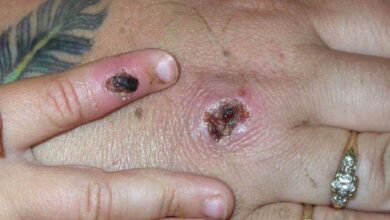Regular blood donation can remove toxic ‘forever chemicals’ from body, study finds

Regular blood donation can help reduce the levels of some toxic synthetic chemical compounds known as “forever chemicals” that persist in the body, according to a new study.
These chemicals, known as PFAS or “per- and poly-fluorinated alkyl substances”, are found in common household objects such as non-stick pans, stain- or water-resistant materials and paints as well as carpets and clothes, and have been implicated in a range of adverse health outcomes.
Legacy firefighting foams also contain PFAS, and studies have shown that firefighters have higher PFAS levels in blood samples than the general population.
Previous research has shown that these chemicals, as their name suggests, almost never degrade naturally.
They can affect the lungs, causing asthma, and are known to be potentially carcinogenic. Studies have also linked PFAS to impaired immune response, obesity, liver function changes, and a range of other diseases.
“They [firefighters] say ‘we don’t want these chemicals in our body, we don’t want to be guinea pigs to see what’s going to happen to us in 10, 20, 30 years. Let’s get them out’,” study co-author Mark Taylor told ABC News.
A new study of about 300 Australian firefighters has suggested that regular donations of blood and blood plasma can help scrub these harmful chemicals out of the body.
In the research, published last week in the journal JAMA Network Open, scientists assessed 285 Fire Rescue Victoria staff and contractors who had elevated levels of perfluorooctane sulfonate (PFOS) – a commonly detected type of PFAS used in some firefighting foams.
The participants each had serum levels of PFOS of 5 nanograms per millilitre (ng/mL) or more, were eligible to donate blood, and had not donated blood in the three months prior to the study.
Researchers, including those from Macquarie University in Australia, randomly assigned 95 participants to donate plasma every six weeks, 95 to donate whole blood every 12 weeks, and the other 95 as the control group to be observed for 12 months.
They analysed the PFAS levels of the participants at four intervals: once at recruitment, then at the start of the trial, after 12 months of following their treatment plan, and again three months later.
Plasma donation was found to be the most effective intervention, reducing mean serum PFOS levels by 2.9 ng/mL compared with a 1.1-ng/mL reduction with blood donation – “a significant difference” according to the scientists.
“Plasma donation was most effective, resulting in a roughly 30 per cent decrease in average blood serum PFAS concentrations over the 12-month trial period,” they wrote in The Conversation.
Researchers explained that the reduction in levels of the toxic chemicals was likely because PFAS are bound to proteins primarily found in the serum.
“This study provides the first avenue for affected individuals to remove PFAS from their bodies and redress the effects of their PFAS exposure,” scientists noted.
Plasma donation was likely more effective than blood donation since firefighters in the former group donated blood every six weeks, while those in the latter group donated every 12 weeks, researchers explained.
“Plasma PFAS concentrations are also about two times higher than blood PFAS concentrations, which could make plasma donation more efficient at reducing the body burden of PFAS chemicals,” they added.
However, scientists said more research was needed to determine the ideal frequency and volumes of donations that can be effective for lowering PFAS, “balancing the treatment efficacy with the obstacles to frequent donations”.
As for recipients of these donated blood components, they say no PFAS threshold has been identified as posing an increased risk.





